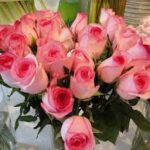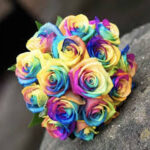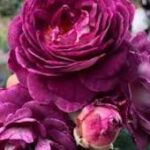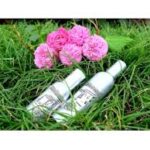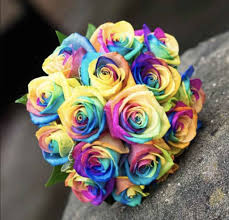
In the intricate tapestry of natural ecosystems, flowers play a pivotal role in interacting with a diverse array of animal species, facilitating mutualistic relationships that support the growth and development of both parties. These interactions contribute to the ecological balance and biodiversity of ecosystems worldwide. Let’s explore the fascinating dynamics of how flowers and different animal species interact and mutually benefit each other in their natural environments:
**1. Pollination Partnerships:**
One of the most well-known interactions between flowers and animals is pollination. Pollinators such as bees, butterflies, birds, bats, and beetles play a crucial role in transferring pollen between flowers, facilitating the reproductive process. As they forage for nectar and pollen, these animals inadvertently transfer pollen from one flower to another, ensuring the fertilization of plants and the production of seeds and fruits. In return, they receive nutritious food sources and contribute to the perpetuation of plant species.
**2. Seed Dispersal Mechanisms:**
Many plants rely on animals for the dispersal of their seeds, ensuring their propagation and colonization of new areas. Fruits and seeds of various plants attract animals such as birds, mammals, and insects with their nutritious pulp or attractive colors. These animals consume the fruits and seeds and subsequently disperse them over large distances through their droppings or by carrying them away. This mutualistic relationship allows plants to colonize new habitats and ensures genetic diversity within populations.
**3. Mutualistic Symbiosis:**
Some flowers form mutualistic symbiotic relationships with specific animal species, providing them with food and shelter in exchange for various services. For example, certain orchids have evolved intricate floral structures that attract specific pollinators, such as male bees or wasps, by mimicking the appearance and scent of female insects. The pollinators inadvertently transfer pollen while attempting to mate with the flower, ensuring their reproductive success. Similarly, flowers may provide nesting sites or food sources for insects, birds, and mammals, fostering mutually beneficial partnerships.
**4. Defensive Mechanisms:**
In addition to facilitating pollination and seed dispersal, flowers may also employ defensive mechanisms to protect themselves from herbivores and pathogens. Some flowers produce toxic compounds or spines to deter herbivores from feeding on their tissues, while others rely on symbiotic relationships with ants or other insects for protection. These insects, known as floral visitors, defend the flowers against herbivores and parasites in exchange for nectar or shelter.
**5. Ecosystem Services:**
The interactions between flowers and animals provide essential ecosystem services that support the functioning of natural ecosystems. Pollination ensures the reproduction of flowering plants, which form the foundation of terrestrial ecosystems and provide habitat and food for numerous animal species. Seed dispersal maintains genetic diversity and promotes plant colonization, contributing to ecosystem resilience and regeneration. Moreover, mutualistic relationships between flowers and animals enhance biodiversity and ecosystem stability, ultimately benefiting human well-being.
**Conclusion:**
In conclusion, the interaction between flowers and various animal species is a fundamental aspect of natural ecosystems, shaping ecological dynamics and promoting mutualistic relationships. From pollination partnerships and seed dispersal mechanisms to mutualistic symbiosis and defensive strategies, these interactions underscore the interconnectedness and interdependence of life forms in nature. By understanding and conserving these intricate relationships, we can enhance biodiversity conservation efforts and promote the resilience and sustainability of ecosystems worldwide.
